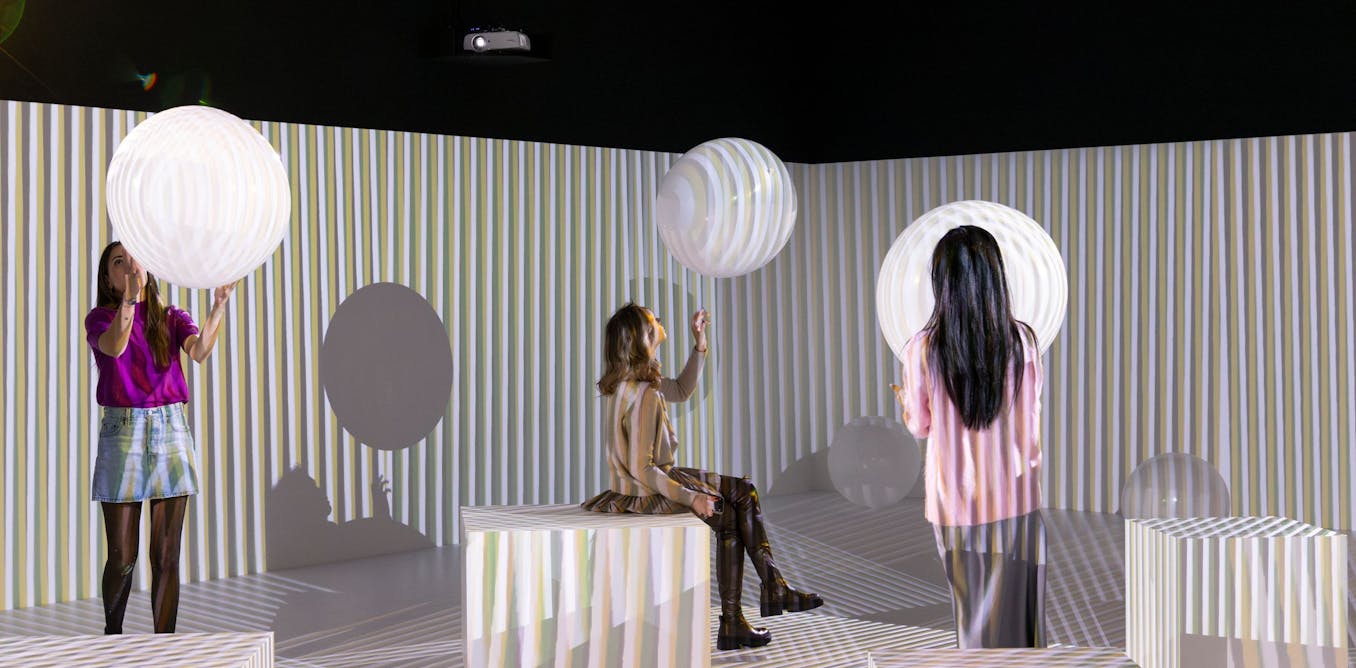The exhibition gives an insight into the complex interactions of humans and machines through history.

Electric Dreams: Art and Technology Before the Internet
There’s a sense of excitement around Electric Dreams: Art and Technology Before the Internet, now open at the Tate Modern, for a number of reasons. First, it’s one of the first major exhibitions to place the current hype surrounding generative artificial intelligence within a historical context. Second, it addresses the historical amnesia of contemporary art institutions regarding the integration of technology in arts practice – something long overdue.
The exhibition revisits a past in which artists dreamed of a future that we are no longer able to envision. The title is a reminder of the 1984 pop song Together in Electric Dreams by Giorgio Moroder and Philip Oakey. It also evokes Philip K. Dick’s dystopian sci-fi novel Do Androids Dream of Electric Sheep? (1968), which was concerned with human agency and machine sentience.
This reference gives a sense of what’s at stake with the exhibition – the challenge AI poses to conventional notions of artistic practice and creativity. The show brings together artists who have collaborated with machines to produce works that challenge human-centred ideas about creativity and sense-making.
By charting the development of optical, kinetic and programmed artistic experimentation, the exhibition gives an insight into the complex interactions of humans and machines up to the early 1990s.
The exhibition is organised chronologically into sections and rooms. In the section Dialogues with Machines, visitors encounter Harold Cohen’s AARON. First developed in the late 1960s, it was allegedly the earliest use of AI for making art (depending on your definition of art).
On the wall is Cohen’s large painted canvas, co-created by the artist and machine. Insight into the process is provided by way of system diagrams and a computer-controlled drawing device displayed in a vitrine. Throughout the exhibition, these kinds of supporting contextual materials emphasise how the various automated processes of machines are contingent on human intervention.
Future Past
It’s hard to do justice to the 150 works on show in a short article. Certain pieces act as signposts to key issues, and the exhibition makes clear how the thinking of each artist reflects the time they were working in.
Brion Gysin’s Dreamachine (1959) is a light machine that should be looked at with your eyes closed. It produces a flickering effect that induces a psychedelic experience without using drugs. Dreamachine is a reminder of the ways drugs and technology were once thought of as possible solutions to societal and environmental problems.
The exhibition broadly covers this period of Utopian hope before the commercialisation of the internet. It charts a time when computer art was not so closely connected to corporate monopolies of big tech.
Looking for something good? Cut through the noise with a carefully curated selection of the latest releases, live events and exhibitions, straight to your inbox every fortnight, on Fridays. Sign up here.
But for all its merits, the alternative approaches offered by the exhibition are largely based on a culture of individualism – something further emphasised by bringing these works into the exhibition rooms of the Tate and reinforcing the singularity of the artist. On the one hand, this grants them long overdue visibility; on the other (like any museum), it nullifies their political potential by removing social context.
There are exceptions. Samia Halaby’s Land (1988) – a computer-generated kinetic painting which sketches the changing boundaries of the occupied Palestinian territories after 1948 – takes on new currency given current events.
There’s a darker side in the Fictional Videogame Stills of Suzanne Treister, too. Created in the early 1990s, they invoke the unconscious desires of the machine by addressing the audience with enigmatic phrases or prompts.
AI runs the danger of erasing history by reworking existing materials and generating its own dreamworlds and hallucinations. This exhibition serves as a reminder that technology itself dreams, and has an unconscious. In short, it has the ability to make us conscious of things we are unaware of – and expand our perception of reality.
Electric Dreams: Art and Technology Before the Internet runs at the Tate Modern until June 1, 2025.
Geoff Cox,London South Bank University,Professor of Art & Computational Culture